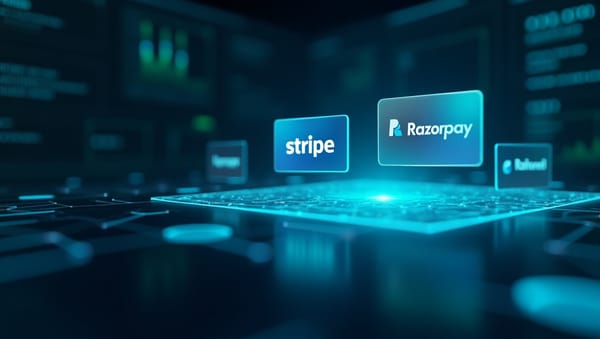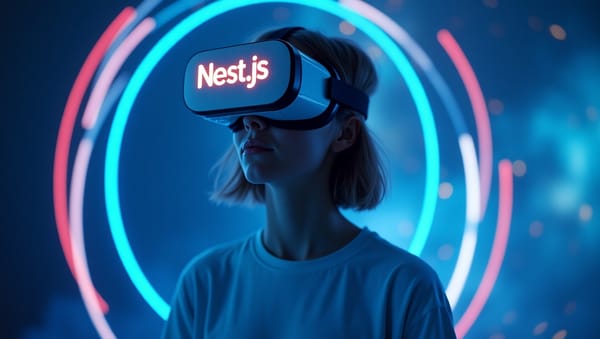Choosing Between Frontend and Full - Stack Development in 2025
Confused between frontend and full-stack development in 2025? This honest guide breaks down what no one tells you—industry trends, pros and cons, and a realistic roadmap to help you choose the right path in your developer journey.

If you're learning web development in 2025, there's a good chance you've asked yourself this:
Should I become a frontend developer or go full-stack?
As someone who's been on both sides of that decision, I want to share what I’ve learned from my own journey — not just theory or hype.
You can also explore the projects I’ve built as a full-stack developer on my portfolio website.
In this blog, we’ll break down:
- What both paths actually involve today
- How the industry is evolving in 2025
- Which one makes more sense for you, depending on your goals, interests, and resources
Let’s clear up the confusion and help you make a smart, future-proof decision.
🧠 What’s the Difference?
Before choosing a path, it’s important to understand what each one means today — not what it meant 5 years ago.
🎨 Frontend Development
Frontend developers focus on what users see and interact with.
They turn design ideas into real, usable interfaces using tools like:
- HTML, CSS, JavaScript
- Frameworks: React.js, Next.js, Vue.js
- Styling: Tailwind CSS, shadcn/ui, Framer Motion
- State management and APIs
It’s not “just making things look pretty.” Frontend devs deeply understand performance, accessibility, responsiveness, and user experience.
🔁 Full-Stack Development
Full-stack developers handle both frontend and backend — they understand how to build complete applications.
This includes:
- Everything from the frontend list above
- Backend frameworks like Node.js, Express.js, Django, etc.
- Databases (MongoDB, SQL, PostgreSQL)
- APIs, authentication (JWT, OAuth), cloud storage
- Deployment and DevOps basics
A full-stack dev can build an entire app from scratch — but that also means juggling more complexity.
🚀 How the Industry Looks in 2025
Here’s what I’ve observed and researched as of mid-2025:
✅ Frontend Is Becoming More Specialized
- Companies now look for frontend devs who deeply understand UI/UX, performance, SEO, and accessibility.
- Tools like Next.js App Router, Server Components, and Edge Functions have made frontend powerful — even backend-ish at times.
✅ Full-Stack Roles Are Common in Startups
- Startups and smaller teams love hiring generalists who can “do it all.”
- Stack options have become smoother to learn (e.g., Supabase, Firebase, serverless APIs).
✅ AI is Changing Both Sides
- AI tools can now generate layouts, boilerplate code, and even suggest logic.
- But creativity, problem-solving, and architectural thinking are still very human.
Verdict: Both paths are very relevant — but the expectations from each role are clearer and higher in 2025.
⚖️ Pros & Cons
Here’s an honest breakdown of both paths from my experience:
🟩 Frontend Development
Pros:
- Easier to enter as a beginner
- Visually satisfying — you see what you build
- High demand for React/Next.js talent
- Opportunities in freelance, startups, and large tech
Cons:
- Competitive — many learners choose frontend first
- Still requires API understanding and state management
- Can be overlooked if you only focus on UI
🟨 Full-Stack Development
Pros:
- End-to-end control of projects
- Great for freelance, SaaS, or solo products
- Valuable in smaller teams/startups
- Makes you more independent and versatile
Cons:
- Steeper learning curve
- Can get overwhelming — too many tools/libraries
- Hard to “master” both sides at once without a plan
🧭 Which One Should You Learn?
There’s no one-size-fits-all answer, but here’s a simple guide I wish someone gave me earlier:
| Goal | Suggested Path |
|---|---|
| Want a job quickly | Frontend (focus hard on 1 framework like Next.js) |
| Want to freelance or build products | Full-Stack |
| Love UI/UX or design systems | Frontend |
| Enjoy solving logic-heavy problems | Full-Stack |
| Time-constrained learner | Frontend first, then backend gradually |
🗺️ A Learning Roadmap (Beginner-Friendly)
Here’s a quick path for both routes:
Frontend Roadmap (2025)

Full-Stack Roadmap (2025)

💡 Final Thoughts (From a Developer Who’s Still Learning)
I started with frontend because I loved creating interfaces. Over time, I became more curious about how the data flows, how servers work, and how to build more independently — and that’s when I picked up backend.
You don’t need to figure it all out on day one.
Start with what excites you the most. Once you’re confident in one layer, the rest becomes easier.
Don’t chase trends — chase understanding.
Whether you're frontend or full-stack, what matters is being able to solve real problems with clean, scalable code.
If you're considering the backend route in full-stack development, you might also enjoy my recent blog on why NestJS is becoming the go-to backend framework in 2025.
💬 Found this blog helpful? I often share more developer insights on Twitter and LinkedIn.
Feel free to connect and continue the conversation!




